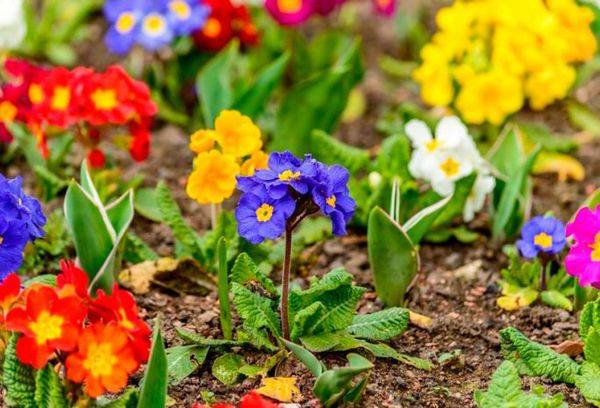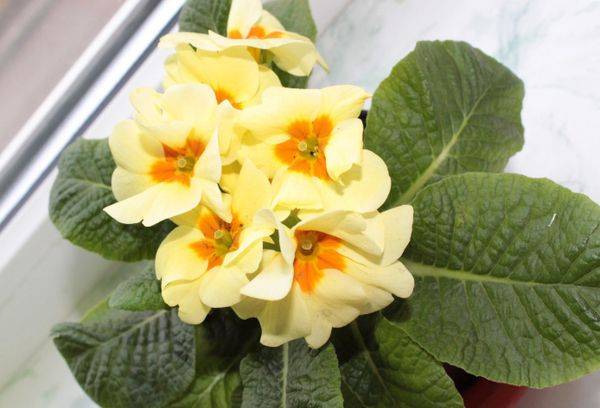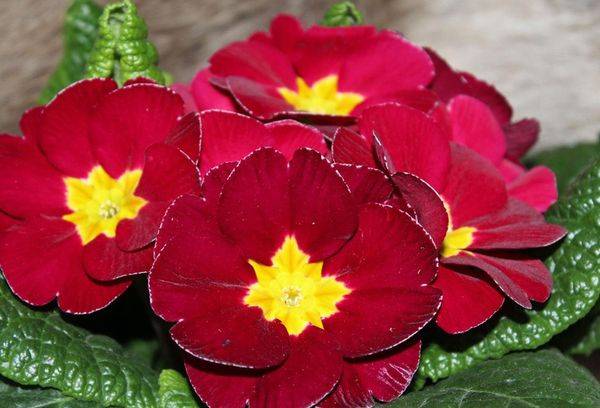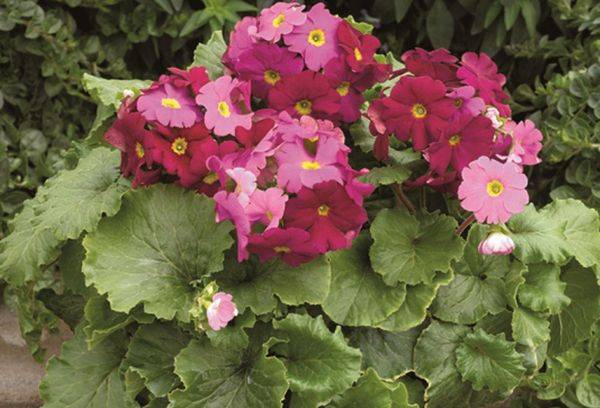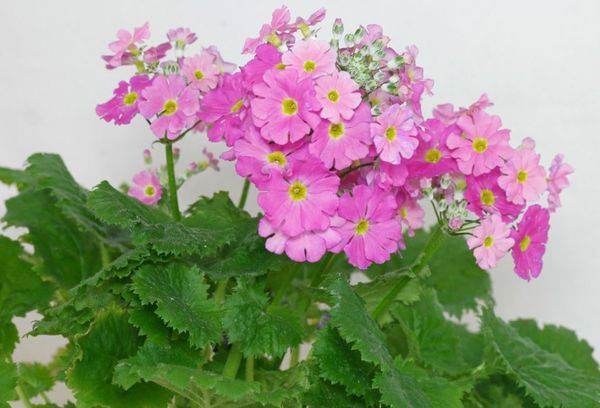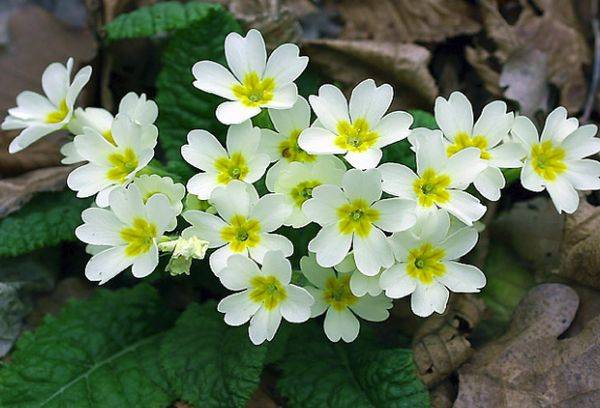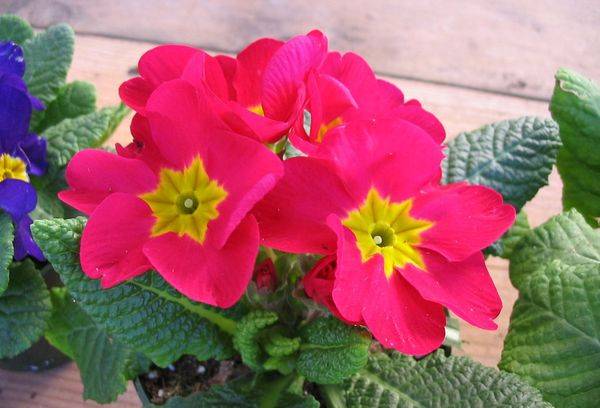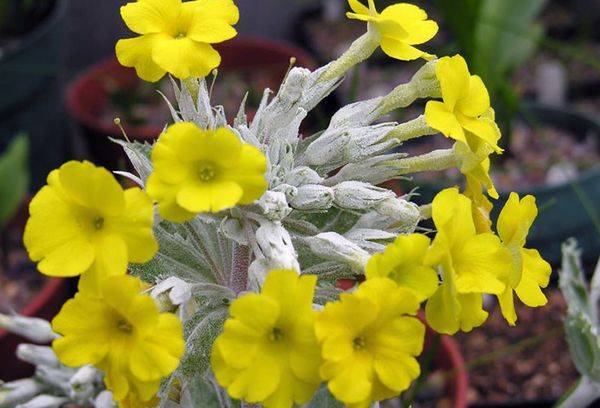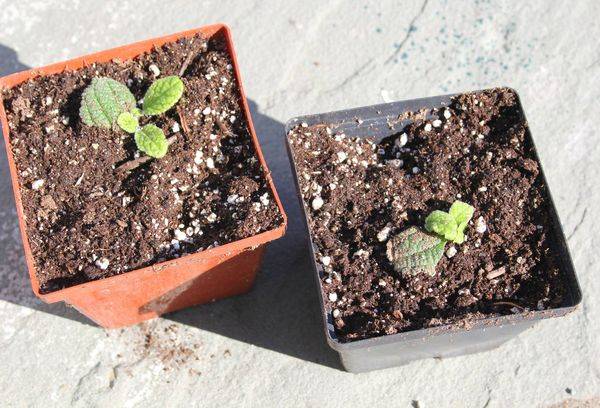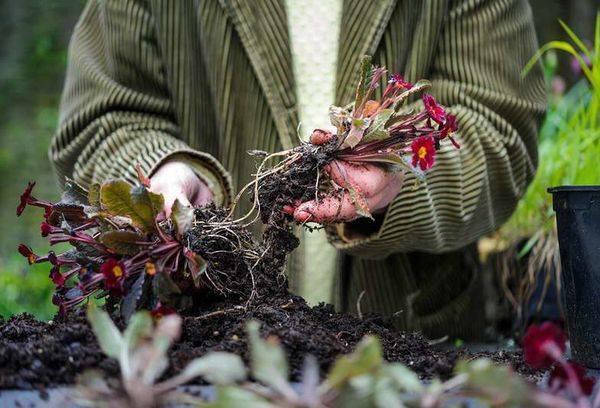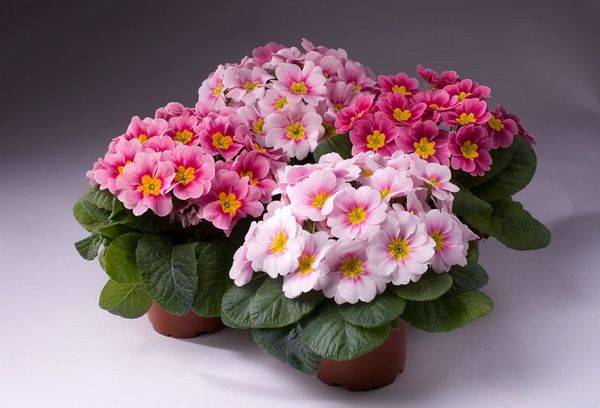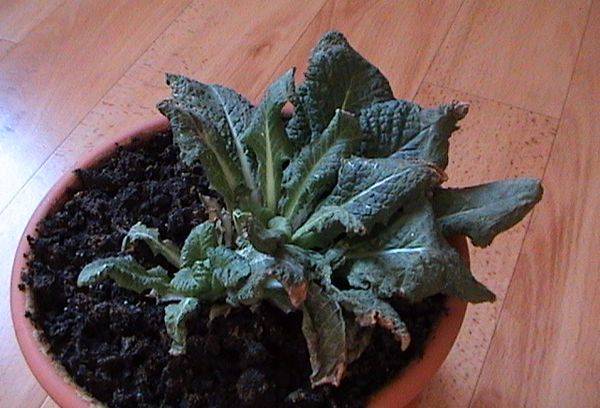How to grow primrose primrose in room conditions
Very beautiful and at the same time unpretentious flower is a primrose indoor among flower growers. Otherwise, it is called the primrose ordinary. Under natural conditions it grows in the Crimea, the Carpathians, Transcaucasia, in western Europe and northern Africa.
Description
The genus of primrose belongs to the family of primroses. Plant height usually varies from five to twenty centimeters, the roots are fibrous. Leaflets on average are seven centimeters in diameter, rosette, oblong-oval or lanceolate, with denticles along the edges, pubescent and wrinkled.
Primrose can be annual and perennial. For growing at home, an annual flower, for example, obkonika or Chinese primrose, is best suited.
Kinds
Indoor grown only some types and varieties:
- Primrose ordinary (stemless) differs in large, from 2.5 to 4 cm in diameter, flowers of various shades: blue, red, yellow, white. Flowers are collected in the central part of the outlet on thin pedicels up to 7 cm long.
- Primrose is mutable often has inflorescences of two shades, which are located on a peduncle up to 30 cm high.
- Primitive inverse conic very often causes allergic reactions in humans, but has an unusually attractive appearance. Flowering - from December to May, in rare cases - until July, the buds are of different colors and collected in umbrellas on pedicels up to 30 cm long. They smell good, the size varies from 2.5 to 4 cm. The plant is perennial, up to 20 cm high.
- The primrose is soft (soft) has small, up to one and a half centimeters, fragrant flowers, they are in large numbers arranged in tiers on a long 45-centimeter thin peduncle. The color of the flowers is very diverse: orange, red, pink, white, purple.
- Primrose kyu has leaves of light green color with a white coating, due to which they look a little powdery. The flowers are small, about 1.3 cm, yellow, with a light aroma, collected 6-10 pieces in a brush, located on a peduncle about 30 cm long.
- Primrose chinese different in large colors, which can be red, white, pink, orange, purple and are arranged in clusters.
Home Care
Despite the fact that the primrose is undemanding to the growing conditions, certain rules must be observed in the process of growing.
Illumination. For placing a pot with primrose, windows facing west, east or north are ideal. Drafts should not be. The best for growing will be a bright room, but direct sunlight from the plant should be avoided.
Temperature condition. Optimum for primrose is a range from +16 to + 20˚ C. Even if the thermometer in the room does not rise above + 16˚ C, abundant flowering can still be achieved.
When the primrose blooms, it is advisable to lower the ambient temperature to + 12-14˚ С. In the spring months and autumn, the temperature regime will be best from +18 to + 20˚ С, in winter - from + 16˚ С to + 18˚ С. Suitable temperature indoor air provides continuous and plentiful flowering.
Watering. Primrose should be watered sparingly, allowing the surface of the substrate to dry. The earthen coma should not be allowed to dry out, but overflowing to the plant is contraindicated - the root system will rot.
Tip
Never pour water directly onto leaflets.If you neglect this rule, then the leaves will begin to rot.
Humidity. Primrose room can easily tolerate high and low humidity. You can not spray the plant, as this will lead to rotting of the leaves.
Priming. To avoid moisture stagnation, a layer of drainage should be put on the bottom of the pot, otherwise the roots will rot. The easiest way to buy a substrate in a flower shop is already prepared and intended for plants of the primrose family. To make the soil mixture with your own hands, take the same amount of peat, leaf soil and sand.
Top dressing. To maintain and stimulate the development of primrose, weak solutions of mineral fertilizers containing microelements should be used. Top dressing is done once every two weeks. During dormancy, the flower does not need them.
Tip
If you apply fertilizer before flowering, then only leaves will grow, so feed the primrose when it has already bloomed.
Periodically remove dried leaves, stems and flowers from the plant.
Breeding
Primrose is planted by dividing the bush and seeds. In the second method, planting is carried out in specially prepared soil, in shallow but wide tanks. After sowing, they must be covered with glass or film. To ensure seed germination, it is necessary to create a favorable temperature regime: from +16 to + 17˚ С. If planting is done correctly, then the first sprouts will appear in 14 days. When there will be 1-2 leaves on them, the plants must be transplanted into pots.
The optimal time for the reproduction of primrose by division is 3-5 years of life. By this age, the flower grows well. Dig a plant and divide into several parts. In this case, you need to pay attention to the kidney of renewal - it should be on each part. Sprinkle the cuts with ash and plant them in the soil mixture. In the first month, seedlings need abundant watering. The best time to start growing primrose is autumn and spring.
For distillation, plants that have reached the age of two are perfect. Acceleration of development consists of two stages:
- At the end of autumn, remove the flower from the container with an earthen lump and place it in a cool room where the thermometer will not rise above + 3 ° C. Leave the primrose until February.
- In February, clean the flower from damaged and old parts (remove bad stems and leaves) and plant in a pot. The socket must be located at ground level. Place the container in a well-lit, cool room. Water the primrose sparingly, and after the buds appear, feed. The introduction of a weak solution of mineral fertilizers during this period will enhance flowering.
Tip
purityis.decorexpro.com/en/ magazine recommends that for distillation a temperature of +5 to + 10˚C be provided. If it is warmer, the leaves will grow very quickly to the detriment of budding.
If you start distillation in February, primrose will present flowers and with them a festive mood in time for March 8th.
Transfer
The optimal time for relocation of primrose is once every four years. It is convenient to propagate the flower simultaneously with the transplant. The best time for the procedure is the end of September.
Transplant primrose follows after purchase. This is because caring for plants in the place where it was purchased is different from that at home. Do not transplant the flower immediately: the plant must adapt to new conditions. Otherwise, the stress associated with the transplant will overlap with the weakness caused by the change of environment, and the green pet may die.
Often, gardeners begin to transplant a plant if they are not satisfied with its appearance or, for example, bought a new, beautiful pot. The approach to flower care arrangements should be reasonable:
- analyze whether the season is acceptable for transplanting;
- Is the appearance of the plant really so unattractive.
Resettlement is objectively necessary:
- if the plant began to look bad after spending some time at home;
- pests, symptoms of diseases or deviations in the development of the plant are noticed.
A primrose transplant is especially necessary, which grew in distant lands and is considered imported.
The clay pot with holes in the bottom will be optimal for relocation capacity to ensure the respiration of the plant, not too large and not very small. The soil mixture is bought in a flower shop or made independently. The best soil will be sheet and soddy soil taken in equal proportions, as well as sand cleared of impurities, due to which the substrate will be airy, loose and light.
At the bottom of the container, lay a drainage layer into which add dry or wet sphagnum moss. Pour the soil mixture into the drainage.
Tip
Do not make the dewatering layer too thick or pick up a tall pot. The root system of the primrose should not be in contact with drainage.
The roots of the plant are very fragile and delicate, so you should transfer it from one container to another as carefully as possible. Do not unravel the roots, mixed with the soil and confused with the formation of a lump of earth, transplant the flower into a new pot with it and dig it on the sides.
After transplantation, care for the primrose must be especially carefully. Provide regular watering, after flowering, remove the old buds - the plant should not waste life energy on obsolete parts. In this case, it will bloom for a longer time.
Tip
Between transplants, renew the soil around the plant.
Planting and caring for primrose is quite within the power of even an inexperienced grower, do not require special skills and experience. However, the flower does not like neglect.
Pests and diseases
The most common disease of primroses is rot of stems and root system, also often found:
- anthracnose;
- powdery mildew;
- spotting;
- rust;
- jaundice;
- cucumber mosaic.
The most dangerous for primrose is the spotting caused by the fungus ramacaria cercosporella. As a rule, the plant is affected in May, the first symptom is that rounded pale spots appear on the leaves. Over time, the spots acquire a brownish-brown tint with yellowish stains or turn gray. In July, spots become covered with white or gray coating, the affected leaves dry out. Primrose does not bloom and often dies.
Fungicides will help get rid of adversity. Remove and destroy stained leaves, then treat the flower with “Topsin” or “Fundazol” in accordance with the instructions for use of the drug.
Of the pests on the primrose, the leaf and gall nematode, weevil, aphid, and spider mite settle. In case of severe pest damage, treat the flower with “Acarin”, “Fitoferm” or “Fufanon” in accordance with the instructions for use of the product.
Beneficial features
Primrose is not only a beautiful flower, but also has useful qualities. The plant has an expectorant, diuretic and diaphoretic effect, strengthens the body. Helps normalize the secretion of gastric juice, improves the adrenal glands. From ancient times, in folk medicine, the aerial part of the primrose is used, which is rich in saponins and phenolic glycosides. The roots contain glycosides and essential oil, carotene.
Primrose oil provides restoration of immunity, effective in the treatment of painful menstruation and unpleasant symptoms of menopause in women. The tool is used in the treatment of hormonal disorders in men and women, as it helps to increase hormone levels. Oil is used during rehabilitation after infectious ailments and intoxications. Helps to fight high blood pressure, angina pectoris, cardiovascular diseases.
Adding primrose to salads is beneficial, as it contains ascorbic acid in large quantities. The dried plant is used for acute respiratory infections, influenza, bronchitis, hay fever, tonsillitis, rhinosinusitis.Green mass acts as a weak sleeping pill and sedative, effective in the treatment of migraines and neurosis.
There are contraindications for the use of primrose: pregnancy, mental illness (schizophrenia), individual intolerance (the plant often causes allergic reactions). Before using primrose for therapeutic or prophylactic purposes, it is necessary to consult with an observing physician.
